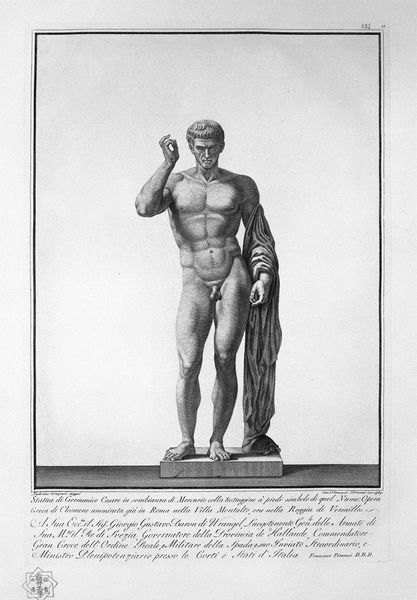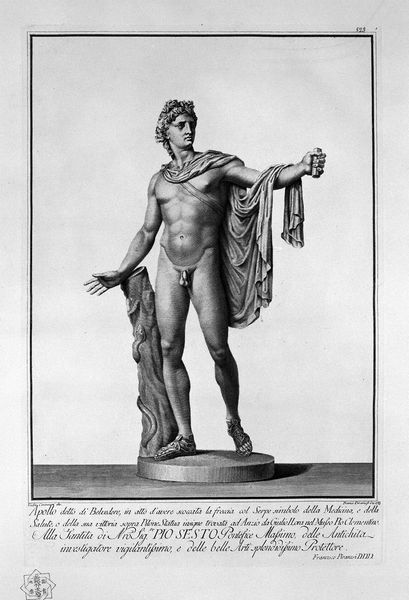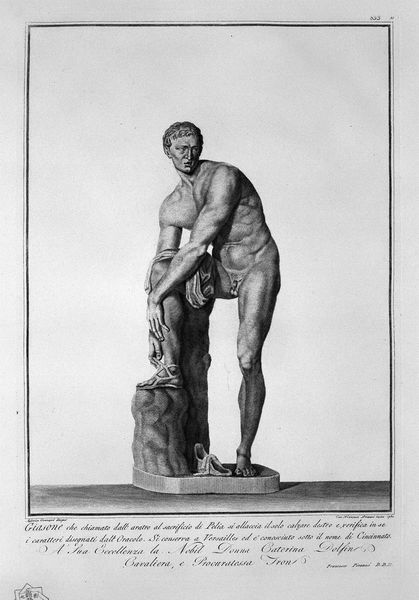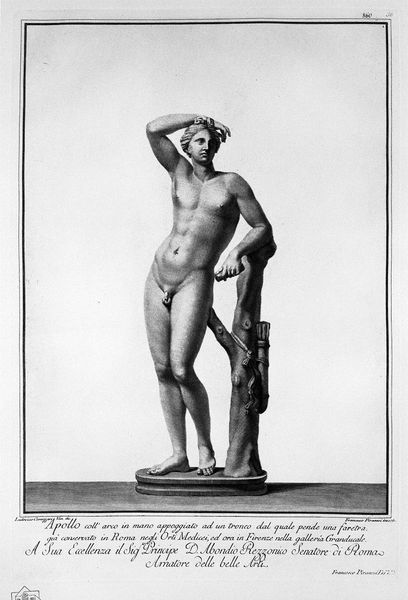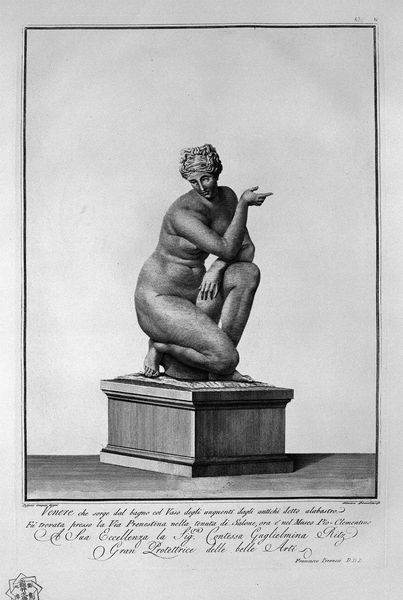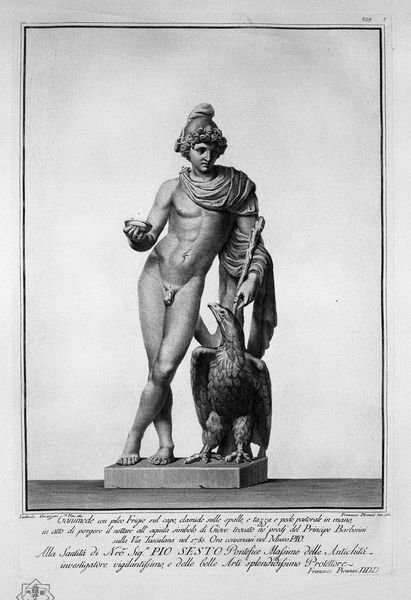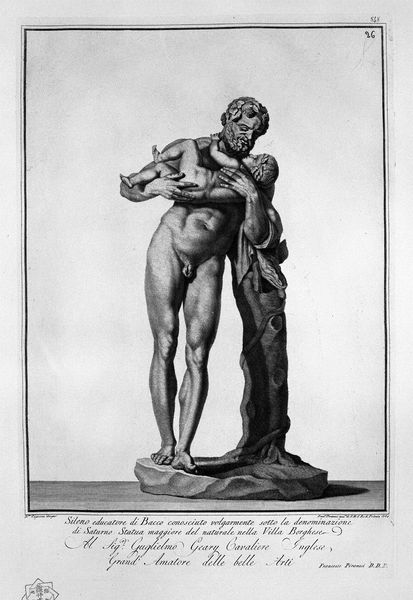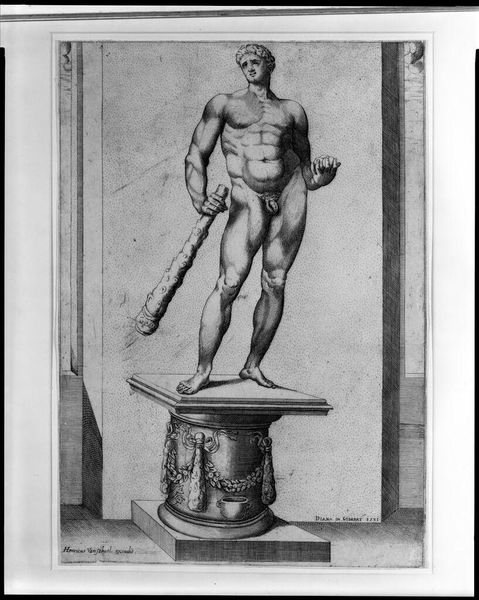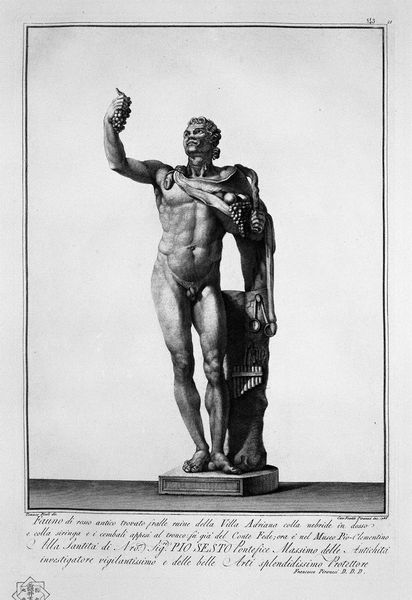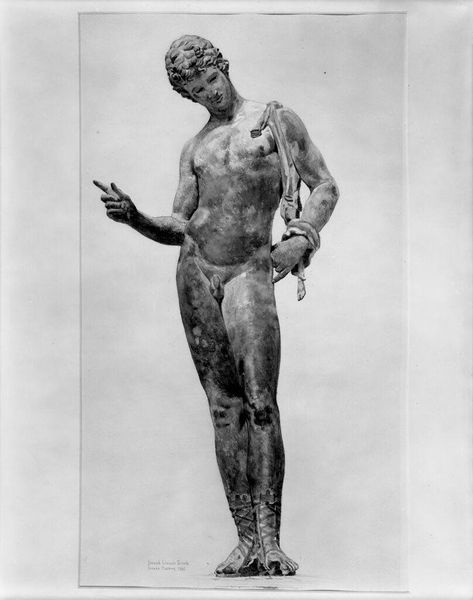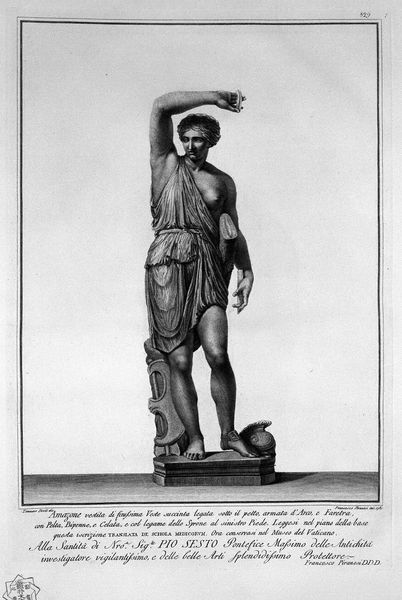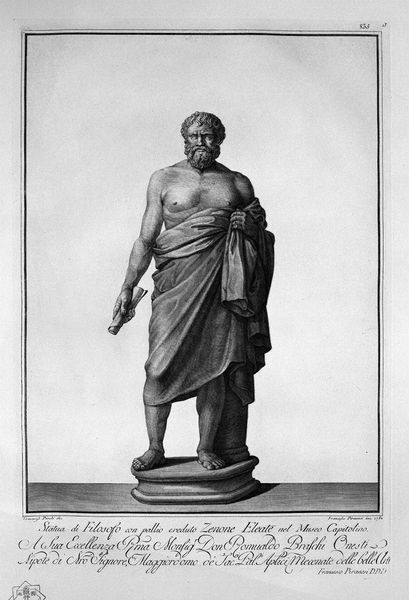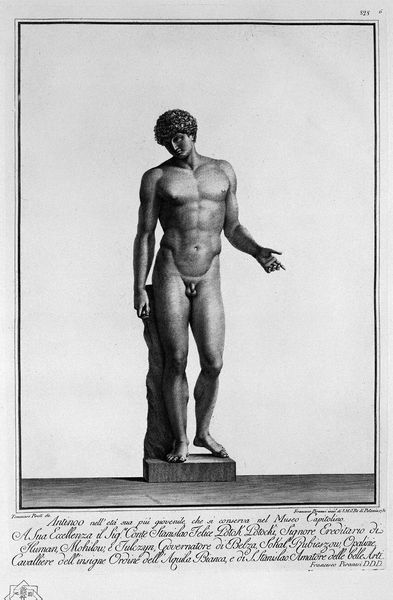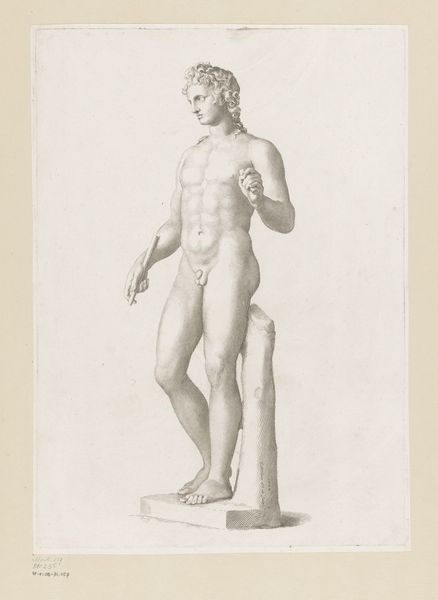
drawing, print, etching, photography, sculpture, engraving
#
portrait
#
drawing
#
neoclacissism
#
statue
#
portrait image
# print
#
etching
#
classical-realism
#
photography
#
framed image
#
sculpture
#
men
#
history-painting
#
nude
#
engraving
#
statue
Copyright: Public domain
Curator: Let's delve into this etching by Giovanni Battista Piranesi, entitled "Harpocrates". It's rendered in a neoclassical style, a print portraying a statue of the Egyptian god of silence. Editor: Immediately, the precision strikes me. Look at that incredible detail achieved solely through line work. The stark contrasts give the figure weight, making it very present despite being an engraving. Curator: Indeed. Piranesi was fascinated by antiquity, but he was equally a shrewd entrepreneur who marketed these prints. The image originates from the find of the statue from Villa Adriana in the 18th century, right when wealthy Europeans would embark on the Grand Tour to deepen their knowledge of history. Prints such as these thus helped spread knowledge of antiquities – or sometimes created it, too, influencing tastes and fashions across Europe. Editor: The composition is undeniably classic. That contrapposto stance gives him life, that very slight S-curve suggesting movement. And the finger to the lip gesture reinforces a sense of imposed silence, like we're intruding on something sacred. The choice to isolate the figure on a simple plinth forces us to consider the statue's form itself. Curator: I'd add that this portrayal of Harpocrates reflects the evolving understanding of Egyptian mythology during the neoclassical period. Instead of depicting this sculpture with all the religious significance attached, this kind of prints became objects of collection or decor. And even now, in today’s art market, there are complex debates of the provenance of artwork like this as prints can often misrepresent its true legacy. Editor: True. But it’s still incredibly engaging on a purely formal level. The balance between light and shadow, the rhythmic repetition of lines that model the form... it's a masterclass in how to create depth and texture using a seemingly limited vocabulary. Curator: It serves as a reminder of how profoundly antiquities impacted artistic expression and societal taste in Piranesi's time and still to this day. The reproduction through printing enabled it to exert a broad impact on people in drawing rooms across Europe. Editor: Ultimately, "Harpocrates" serves as a reminder of art's potential to reveal more than just its subject matter – it is as much about our viewing practices too.
Comments
No comments
Be the first to comment and join the conversation on the ultimate creative platform.
